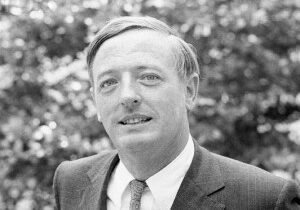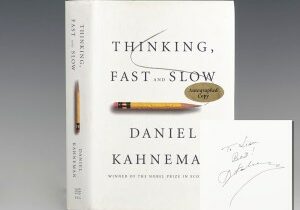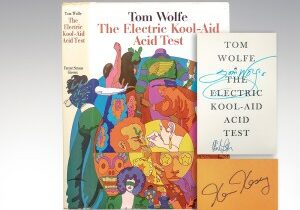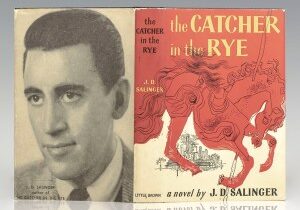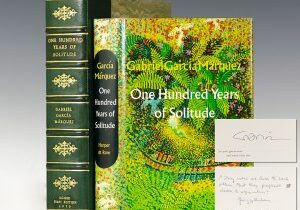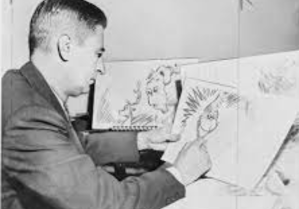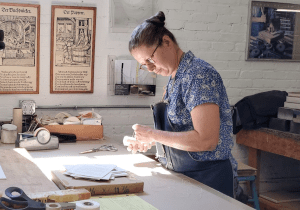Saturday, March 12th 2022 marks the centennial birthday of one of the greatest writers of the 20th century, Jack Kerouac.
“The only people for me are the mad ones, the ones who are mad to live, mad to talk, mad to be saved, desirous of everything at the same time, the ones who never yawn or say a commonplace thing, but burn, burn, burn like fabulous yellow roman candles exploding like spiders across the stars and in the middle you see the blue centerlight pop and everybody goes ‘Awww!’” (Jack Kerouac, On The Road).
Born on March 12, 1922 to French-Canadian parents in Lowell, Massachusetts, Jean-Louis Lebris de Kérouac, now known as Jack Kerouac, was a literary pioneer, his work now being synonymous with the hip, intellectual, and non-conformist post-war Beat Generation.
Kerouac first met the figures that would shape his legacy and appear in each of his novels as a student at Columbia University, most notably Neal Cassady, Allen Ginsberg, and William S. Burroughs. A reflection of the Beat Generation’s ideals including the rejection of materialism and idealization of the Eastern spiritual quest, Kerouac’s deeply personal and profound body of work encapsulates the universal experience of man’s search for meaning and identity uniquely informed by the powerful strangeness of loneliness as a traveler, vagabond, and man alone in the wilderness.
Kerouac’s collected works now constitute an epic autobiographical saga, with each volume offering an intimate glimpse into the various chapters of the author’s unconventional and richly lived life and his struggle to grapple with his dual nature as both a solitary writer and mischievous merrymaker thrilled by the spontaneous highs of the 60s counterculture lifestyle.
“He had never felt anything like that before – yet somehow he knew that from now on he would always feel like that, always…” (Jack Kerouac, The Town and the City).
Kerouac left Columbia in the fall of 1941 and began writing his first book, The Town and the City, in 1945 after serving in the Navy for several years. Written before Kerouac’s style was influenced by the spontaneity of American jazz, the novel bore the strong influence of Thomas Wolfe and was initially rejected by several publishers including Scribner’s and Little Brown who declined due the novel’s excessive length. With the help of Allen Ginsberg and his former teacher at Columbia University, Mark Van Doren, the book was finally published by Harcourt, Brace and Company.
Reflecting on the generational epic formula and the contrasts of small-town life versus the multi-dimensional, and larger life of the city, the plot is split between the locales of 1940s New York City (where the Beat Generation formed and flourished) and the protagonist’s hometown of Galloway, Massachusetts. Allen Ginsberg (as Leon Levinsky), Lucien Carr (as Kenneth Wood), William Burroughs (as Will Dennison), Herbert Huncke (as Junky), David Kammerer (as Waldo Meister), Edie Parker (as Judie Smith) and Joan Vollmer (as Mary Dennison) are all, for the first time, represented.
The novel ultimately sold poorly and Kerouac would spend the next six years drafting what would become his masterpiece, On the Road.

First edition of the definitive novel of the Beat Generation: Jack Kerouac’s on the Road
“Nothing behind me, everything ahead of me, as is ever so on the road” (Jack Kerouac, On the Road).
Now considered the definitive work of the Beat Generation, On the Road instantly defined the lifestyle and philosophy of the generation upon publication in 1957. Heavily influenced by the prolific explosion of jazz in 1950s America and by Kerouac’s studies in Buddhism with fellow beat and academic Gary Snyder, the raucous, exuberant, and wildly funny account of Kerouac’s journey through America and Mexico with Neal Cassady was, in the words of a New York Times reviewer, “the clearest and most important utterance yet made by the generation Kerouac himself named years ago as ‘beat.'”
Written in the mode of ecstatic improvisation that Allen Ginsberg described as “spontaneous bop prosody,” the novel remains electrifying in its thirst for experience and its defiant rebuke of American conformity. In his portrayal of the fervent relationship between writer Sal Paradise and his outrageous, exasperating, and inimitable friend Dean Moriarty, Kerouac created one of the great friendships in American literature; and his rendering of the cities and highways and wildernesses that his characters restlessly explore are a hallucinatory travelogue of a nation he both mourns and celebrates.
“I felt free and therefore I was free” (Jack Kerouac, The Dharma Bums).
One of the best and most popular of Kerouac’s autobiographical novels, The Dharma Bums continued the chronicle of the Beat Generation and Kerouac’s evolving life philosophy. Another attempt to come to terms with the dual nature of his life, the book recounts Kerouac’s experiences mountaineering, hiking, and hitchhiking with close friend and mentor Gary Snyder through the west as well as his “city life” in jazz clubs, at poetry readings, and drunken parties, each event reflected upon in the context of Buddhist philosophy.
In a letter to Kerouac, Snyder praised the book, saying “Dharma Bums is a beautiful book, and I am amazed and touched that you should say so many nice things about me because that period was for me really a great process of learning from you…”
“The beauty of things must be that they end” (
Set in Mexico City, Kerouac’s second novella Tristessa was published in 1960. Based on his relationship with a Mexican prostitute, the book documents Tristessa’s addiction to morphine and impoverished life with adulating descriptions of her saintly beauty and inherent innocence.
Ginsberg, in describing the book, wrote “Tristessa’s a narrative meditation studying a hen, a rooster, a dove, a cat, a dog, family meat, and a ravishing, ravished junkie lady.”
“No man should go through life without once experiencing healthy, even bored solitude in the wilderness, finding himself depending solely on himself and thereby learning his true and hidden strength” (Jack Kerouac, Lonesome Traveler).
Published in 1960, Lonesome Traveler was Kerouac’s first undisguisedly autobiographical work and recounts the restless years he spent writing, wandering, and working as a railway brakeman in California, a steward on a tramp steamer, and a fire lookout on the crest of Desolation Peak in the Cascade Mountains.
“The empty blue sky of space says ‘All this comes back to me, then goes again, and comes back again, then goes again, and I don’t care, it still belongs to me’” (Jack Kerouac, Big Sur).
Published in 1962, Big Sur continues the story of Kerouac’s alter ego Jack Duluoz, who, overwhelmed by success and excess, gravitates back and forth between wild binges in San Francisco and an isolated cabin on the California coast where he attempts to renew his spirit and clear his head of madness and alcohol. Only nature seems to restore him to a sense of balance. In the words of Allen Ginsberg, Big Sur “reveals consciousness in all its syntactic elaboration, detailing the luminous emptiness of his own paranoiac confusion.”
“So shut up, live, travel, adventure, bless and don’t be sorry” (Jack Kerouac, Desolation Angels).
Described by Time as “one of the most true, comic, and grizzly journeys in American literature”, Desolation Angels was published in 1965 and covers a key year in Jack Kerouac’s life—the period that led up to the publication of On the Road in September of 1957.
After spending two months in the summer of 1956 as a fire lookout on Desolation Peak in the North Cascade Mountains of Washington, Kerouac’s fictional self Jack Duluoz comes down from the isolated mountains to the wild excitement of the bars, jazz clubs, and parties of San Francisco, before traveling on to Mexico City, New York, Tangiers, Paris, and London. Duluoz attempts to extricate himself from the world but fails, for one must “live, travel, adventure, bless, and don’t be sorry.”
“You are the equal of the idol who has given you your inspiration” (Jack Kerouac, Satori in Paris).
Published at the height of Kerouac’s fame in 1966, Satori In Paris tells the tale of Kerouac’s trip to France to trace his ancestors and further explore his understanding of Buddhism. From his reports of the strangers he meets and the all-night conversations he enjoys in seedy bars in Paris and Brittany, to the moment in a cab he experiences Buddhism’s satori – a feeling of sudden awakening, the work contains some of Kerouac’s most lyrical descriptions.

Rare original Jack Kerouac drawing; signed by him
In addition to the rare first editions featured above, our collection currently includes several first editions of the works of other notable Beat Generation authors including Allen Ginsberg, John Clellon Holmes, William S. Burroughs, and Gary Snyder, among others.










